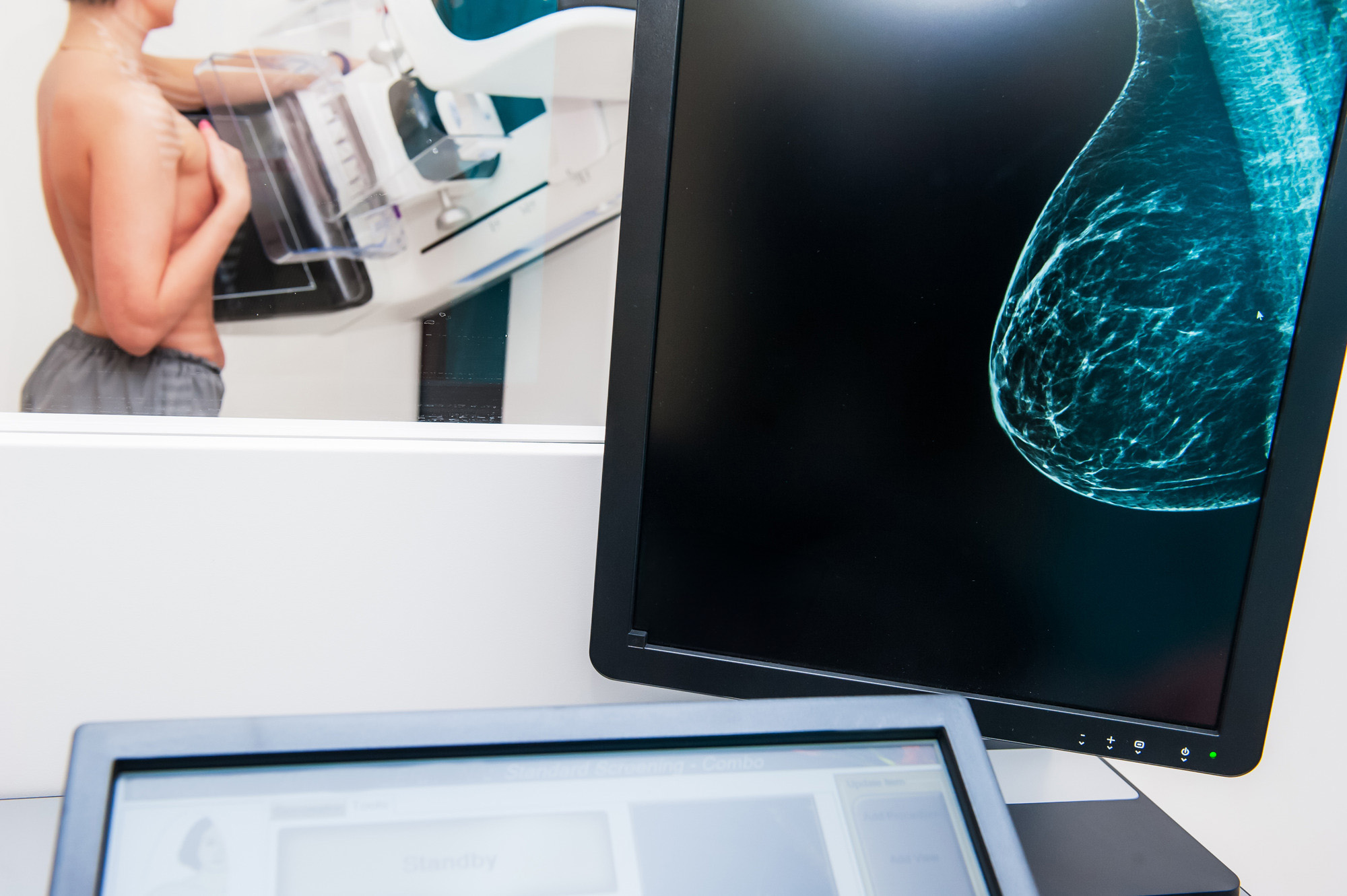A woman’s breast is primarily made up of fat and fibroglandular breast tissue, which is the network of milk glands and ducts designed to produce and transport milk to the nipple for breast feeding. Fibrous tissue, also known as connective tissue, supports the breast and holds everything in place.
When performing a mammogram, breast specialists are taking an X-ray of a 3D organ, the breast, and transforming it into a two dimensional image that can be displayed on film or a video monitor. All women have varying amounts of fatty and fibroglandular breast tissues in their breasts, and that will change how the mammogram looks, from person to person.
Breast density is the ratio of dense tissue to the total volume of the breast:
- High breast density means there is a greater amount of fibroglandular breast tissue compared to fat.
- Low breast density means there is a greater amount of fat compared to fibroglandular breast tissue.
This is important because on a mammogram, fat in the breast looks dark and the denser fibroglandular breast tissue looks light gray or white. Cancer can also appear white on a mammogram, which makes it is harder to interpret mammograms in women with dense breasts. This results in a decrease in the sensitivity of the mammogram, which may impact early detection in women with dense breasts. According to research, 35 percent of breast cancer goes undetected by mammography in women with dense breasts, as density masks the appearance of tumors.
Breast density changes throughout a woman’s life with most studies showing breast density decreasing with age, but it is also known to be influenced by other factors such as genetics, body mass index, monthly hormonal cycles, age at first childbirth, and use of post-menopausal hormone replacement.
Importance of Density
It is estimated that over 40 percent of women in the US who are of mammogram screening age have dense breast tissue. The volume and distribution of this dense breast tissue plays a major role in the sensitivity of screening mammography as well as the individual patient’s risk of developing breast cancer:
- Mammography is estimated to be only 48% effective in dense breasts, compared to 98% effective in fatty breasts (DMIST trial).
- Women with extremely dense breasts are twice as likely to develop breast cancer as an average density woman.
- The risk associated with extremely dense breasts is similar to the risk associated with a family history of breast cancer in a mother, sister, or daughter.
Disclaimer
This site has been developed to address the needs of people who want to know about breast density by PowerLook Density Assessment (formerly iReveal). Although we have tried to make this site as evidence-based as possible, we cannot and do not guarantee that all the information on this site is accurate. If you have any concerns about your breast health, we urge you to talk to your healthcare professionals.

